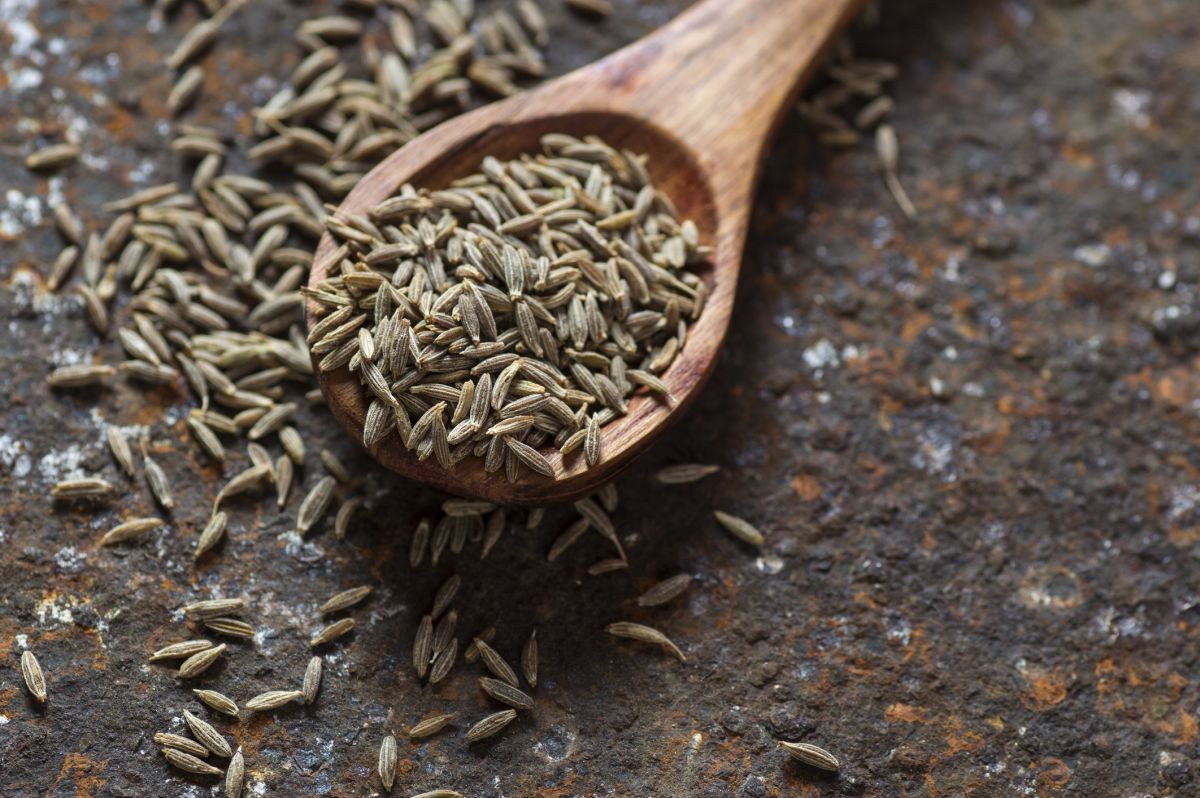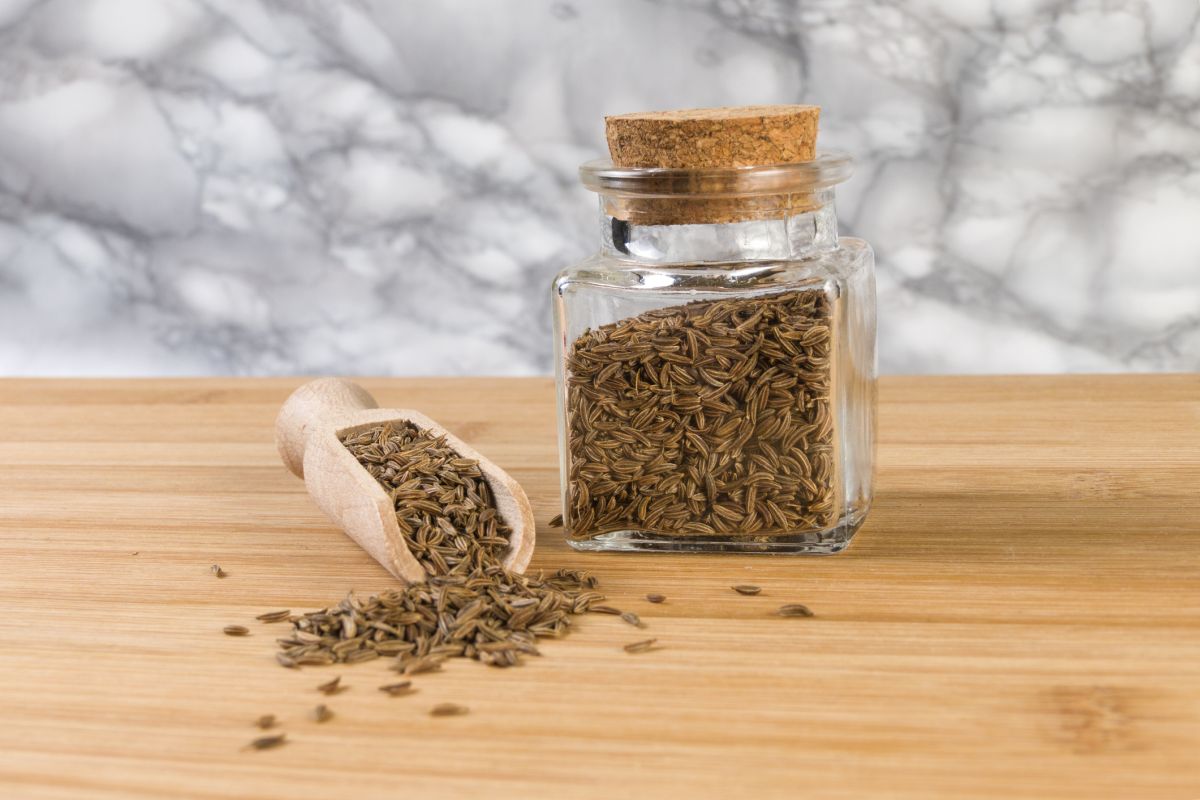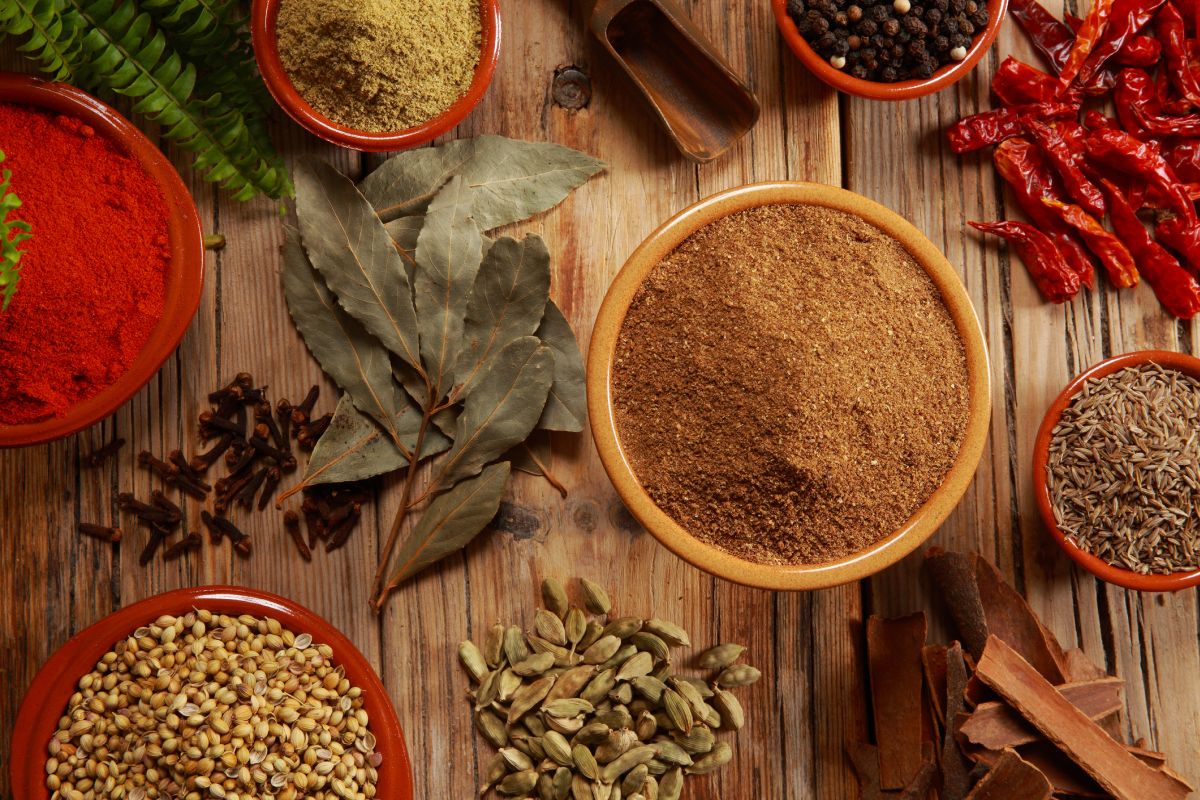A cumin substitute is recommended rather than just omitting it from your recipe completely. Cumin has a wonderful earthy and warm flavor that adds a bold, savory taste to stews, soups, and roasts – but if you’ve run out, there are many other spices that have a bold and rich flavor that will make a good alternative.

What is Cumin?
Cumin is a plant native to the Irano-Turanian Region, but when you include cumin in your food, it refers to the dried seeds, whole or ground, of the cumin plant. It has a warm earthy aroma that you often find in Mediterranean cuisine, Indian cuisine, and Mexican, among others.
Common Uses for Cumin
- Adding flavor to stews and soups – it has an earthy and warm aroma, so adding it to any stew will add a ton of flavor without adding any spiciness.
- Falafel and hummus – both of these Middle Eastern dishes require a lot of cumin to make them taste authentic.
- Rubs and roasts – cumin is often included in spice blends made for roasting veggies or rubbing meat.
How to Choose a Substitute for Cumin
- Warmth – Cumin is a warm spice, so if you want to use it for that reason, there are a lot of spices that will add a warm aroma to your dish.
- Earthy – if you need an alternative to cumin that is just as earthy, try using another spice that is earthy, such as coriander.
- Smoky – not everyone perceives cumin as smoky, but when roasting veggies with cumin, it definitely gives a smoky profile, so try using smoked paprika as a substitute.
- Spice – although cumin is not spicy like chili powder is, you should consider that some spice blends may contain spicy ingredients along with cumin, which might not be suitable for your taste.
10 Best Ingredients for a Cumin Substitute
1. Coriander
Ground or whole coriander can be used in a lot of recipes where you need cumin, such as roasts and rubs. My Spicer compares both spices, so you know what you’re working with.
2. Moroccan Spice Blends
Most commercially available Moroccan spice blends include cumin. Since Moroccan cuisine is more focused on warmth than spice, you might get away with using a blend like that if you don’t want a spicy alternative. Taste has a recipe for Hummus that uses a Moroccan blend instead of listing separate spices.
3. Caraway Seeds
Caraway seeds, ground or whole, work well in savory dishes and has a bright, earthy taste similar to cumin, but it does have a slight licorice flavor, which may be off-putting to some. They look very similar, so The Spruce has made a comparative article explaining some key differences.
4. Fennel Seeds
Similar to caraway seeds, fennel seeds have a licorice taste to it but are very well suited to add to your spice mix for rubs or roast spice blends. Viral Spices compares the two spices and lists some health benefits of fennel.
5. Taco Seasoning
Taco seasoning contains cumin along with other spices that are complementary to cumin itself. Beware that some taco seasoning blends contain chili, so if heat is not an option in your recipe, try another alternative to cumin. Use a pre-blended taco seasoning in The Spruce’s recipe for taco-rubbed flank steak.
6. Chili Powder
Chili powder is usually an aromatic blend of spices, including cumin and red pepper flakes, making it great to use in curries, roasts, and even in soups. Spice rally compares chili powder to curry.
7. Paprika
Paprika is a very mild powder made from paprika peppers. Though it has little to no heat, paprika does add a rich smokiness to any dish. Use it in anything from hummus to soups, and expect it to add a red color to your recipe too. Souper Sage compares the nutritional value of both.
8. Curry Powder
Curry powder has turmeric as its base, along with other spices such as cumin, fenugreek and coriander, but you don’t only have to make a curry to utilize the spice. McCormick has a list of alternative uses for curry powder.
9. Garam Masala
Garam masala is a slightly bolder blend of spices originating in India. It includes cumin, coriander, cinnamon, and cardamom in the blend, which will add a lovely taste to your roast chicken, as mentioned by Herb Co.
10. Nigella Seeds
The flavor of Nigella seeds is slightly bitter and has an aroma of onion, according to BBC Good Food. They make for a good 1:1 replacement for cumin in your dish since they will add an earthy flavor to your dish, similar to cumin.
Tips for Cumin Substitution
- Start small – unless you have worked with the substitution you have chosen to replace cumin, try working in small batches of adding the spice until you are satisfied with the flavor.
- Test the spice – sometimes the smell of spices is misleading. So try a very small amount of the spice before adding it to your dish. Doing so will ensure you’ll be happy with the end result.
- Toast your spices – if the substitution for cumin seems a bit dull and flat, toasting the spice in a dry, clean pan first will enhance the flavor and add to the smokiness overall.
The Flavor Profile of Cumin?
Cumin can be described as a warm, nutty, peppery, and smoky spice. It is mild when pre-ground, but the best results come from toasting freshly ground cumin seeds.
Why Cumin is Not Good for You
Cumin can quickly decrease your blood sugar levels, which might be a problem for diabetics. Other effects of eating cumin can be bloating, heavy menstrual cycles, and liver damage when consumed in large amounts for an extended period of time.


Leave a Reply